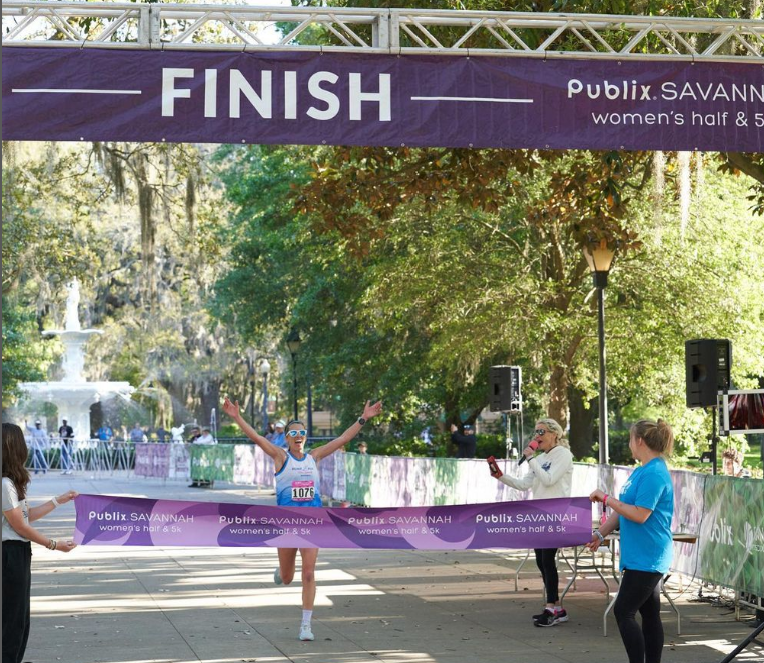
10 Tips To Avoid Training Burnout
fitness natural running newton running athletes running form training tips20 February 2023
There is a fine line between training hard and overtraining that many endurance athletes flirt with regularly. Knowing when to rest and when to power through is an acquired skill that only you can develop for yourself. Nobody knows your body better than you do. Progress in running doesn’t happen overnight, so the best way to improve is to keep your body healthy for the long haul. Here are some tips that I have found to keep me moving forward.
Preventing physical burnout:
- SLEEP - If you’re tired and life allows you to go to bed when the sun is still shining, close your darkening curtains and do it. Getting to bed earlier will also allow you to wake up earlier and potentially without an alarm, so you will feel well-rested and ready to go the next morning.
- NUTRITION - Nutrient deficiencies can present with symptoms similar to overtraining including feeling tired, aching joints/muscles, lack of energy, and muscle soreness. Sometimes bloodwork is the best way to figure out what your body may be lacking and how to include more of it in your diet.
- HYDRATION - There are so many recommendations for how much water to drink daily, and the answer to that question lies somewhere between all of them. At least 50% of your body weight in ounces is a good place to start, but it should be adjusted based on how much sweat is lost during exercise on any given day. The goal is to never feel thirsty. If you feel thirsty, drink water, you’re behind!
- CROSS TRAINING - Find a form of exercise that you love that isn’t running, and do it regularly! Most runners gravitate towards cycling or swimming for the aerobic benefits, but it can be anything. For me, I love getting out of that frontal plane motion of running, so it’s hot yoga, soccer, volleyball, spike ball - any sport really! The goals are to get your heart rate up, and not hurt yourself doing something terribly uncoordinated.
- STRENGTH TRAINING - Pick things up and put them down! You honestly don’t even need weights. Body weight exercises for strengthening glutes, core and single leg balance definitely have their place in a runner’s training plan. On the other hand, it’s fun to see how much weight you can pick up from the floor or put on your back to squat. It makes you feel super strong! If you’re not sure about what to do with heavier weights, a personal trainer or strength coach can be really helpful.
Preventing mental burnout:
- LEAVE YOUR WATCH AT HOME - Go for a run with zero regard for time, pace, or distance. For me, this works best on a long trail run. Forget the numbers, and remember why you love to run!
- INTENTIONAL BREAKS - Take a break from running ON PURPOSE; not because you’re injured, sick or you don’t have time to run etc. Just take a break because you want or need to. It makes you really love and appreciate running when you decide you’re ready to come back.
- READ - Find a book that motivates you, and read it. “Born to Run” and “Let Your Mind Run” are two of my favorites that I have revisited too many times. I’m currently reading “80/20 Running” and have “Atomic Habits” on deck. “Can’t Hurt Me” is perfect for when you want to prepare to enter the pain cave!
- GROUP RUNS - Humans are just big balls of energy - If you need some energy, go run with other humans. Use other people’s goals and motivation to revisit your own. Easy paced group runs are also a great way to actually run “easy” which will help your body recover while still getting your miles in.
- JOURNAL - Set specific goals and intentions, and make a plan on how you will reach them. Write them down and check in regularly. Seeing your goals regularly will also help you make better decisions when it comes to how you go about living your daily life. It helps you to think “will this get me closer or farther from my goal?” when making decisions.
Our bodies are very smart and they’ll tell us what we need if we are ready and willing to listen. Running can become over-complicated with the newest technology, shoes, training plans, or so and so’s social media posts. It is important to strip it back down to its roots every so often to remember why we love it. Sometimes just getting out the door and putting one foot in front of the other is the extent of what you need on that day despite what your training plan says. You don’t always have to hit a certain distance or pace, you just have to GO!
Less force, more flow, my friends!
Meghan Duffy PT, DPT, CPT
Pediatric Physical Therapist
ACSM Certified Personal Trainer
ACSM Certified Autism Exercise Specialist

